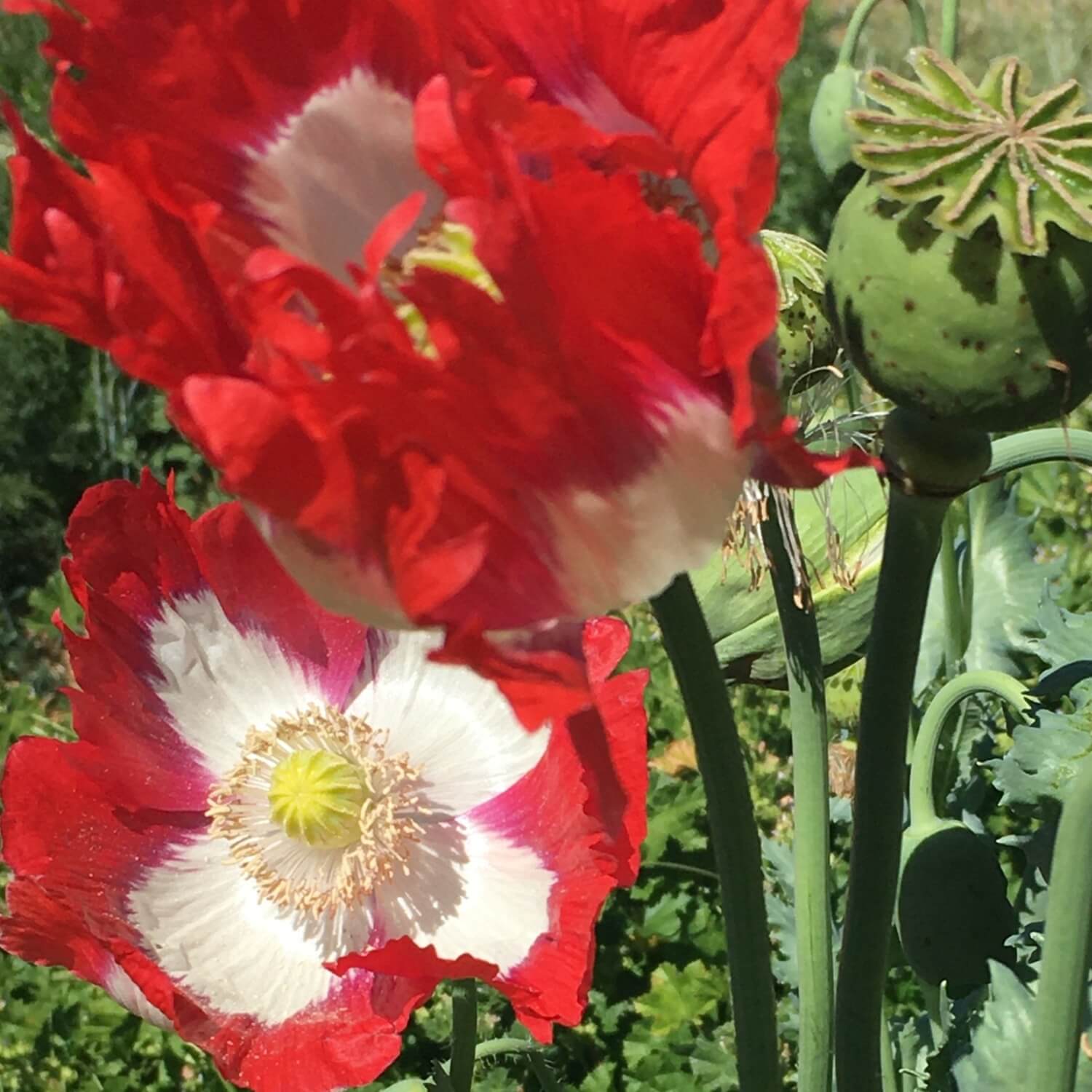
Happy Halloween Weekend!
We are busy around here turning boxes into robot costumes, carving pumpkins and searching for capes to become witches. In between that sort of thing I plan to plant the garlic this weekend.
Garlic is near and dear to us as one of the first crops we ever grew starting in 2006. Of course we love to eat it but beyond that it is a very friendly crop to grow with a high success rate. Garlic is fall planted, mulched and left alone for months to grow, weeded a bit in spring then harvested in early summer. While it does take quite a long time to mature, garlic is not very fussy and will produce even in poor soils under drought conditions.
That said, garlic does prefer fertility and adequate water as it bulbs up in the spring months. Then, during the last month of growth, most growers actually cut the water and the heads half cure in the soil and develop an outer skin.
There are two types of garlic: softneck and hardneck. This refers to the stem of the garlic as it matures in the late spring. Hardneck garlic will grow a hard stem from which a flower head will emerge. This is called a scape and is cut off the plant before the flower head opens. These scapes are delicious stir-fried or in soups. Hardneck garlic often has beautiful red and purple colors on the skins and is known for its pungency. It is best to use your hardneck heads within 3-4 months of harvest.
Softneck garlic lacks the hard stem and flowering head. The stem is pliable and the harvested heads can be woven together in braids. Softneck varieties are slightly milder and they also are known to keep longer, up to 5-7 months.
I like to grow both types. We generally use the hardnecks first since they don't tend to keep as long and the softnecks see us through the winter. Then sometime around March I start to detect a funny smell in the kitchen that turns out to be the garlic going bad. At that time it heads to the compost or gets planted in the kids garden.
How to Plant Garlic:
1. Find seed garlic. This really just means find garlic. Look in your local garden store, natural foods grocery store or ask your garden friends. Make sure your planting stock has root remnants and no rotten bits. Sometimes you can find good planting stock in the grocery store but often, especially if it has been imported, the roots zone has been totally shaved off and sometimes irradiated. It is ok if the roots are cut but not completely absent.
Better sources for seed garlic include seed companies or the farmer's market. Often local famer's market vendors will sell garlic for eating and/or planting. Garlic sold for seed is often quite expensive so if you can find some good quality eating garlic this will be the cheapest way to plant garlic. Usually garlic sold in the stores is softneck because it keeps for a long time. If you are interested in hardneck varieties you will likely need to explore online.
2. Break up the garlic heads into individual cloves leaving the skins on. Be sure you can identify the root side from the growing tip.
3. Prepare your planting area. Garlic will produce better heads with well composted beds high in organic matter.
4. Make planting holes about 3-4 inches deep and about 8-12 inches apart. I usually plant the entire bed in a triangulated pattern but it is also ok to plant in rows.
5. Plant garlic cloves root side down and cover with about 2-3 inches of soil.
6. Cover with a layer of mulch, not too deep since the garlic will need to sprout through the soil and mulch. More mulch can be added later. The mulch is key to keeping winter weeds down and preventing soil compaction due to winter rains.
Garlic sprouts will start to emerge about 2-4 weeks after planting. If there is no rain be sure to irrigate during this phase. Monitor your crop for gopher action and trap if necessary. Usually it is necessary to weed in the spring and I often top dress with a layer of compost in February/March to give the garlic a boost and encourage large bulb production.
In late spring watch for scapes on your hardnecks and pick those off. Then in about May-June look for the garlic leaves to start yellowing. At this time you can cut the water to the garlic and let it cure in the field. When you suspect your garlic is ready, pick one and see. After harvest, garlic needs to be cured for an additional 2-3 weeks in a shady place at room temperature.
I'll write more about garlic in the spring and summer as we go through this process ourselves. Bookmark this article for easy reference and share with a friend!
Have a spooky fun weekend! Oh yeah, garlic is good for keeping vampires at bay too:) Or so I've heard!
Kalan






